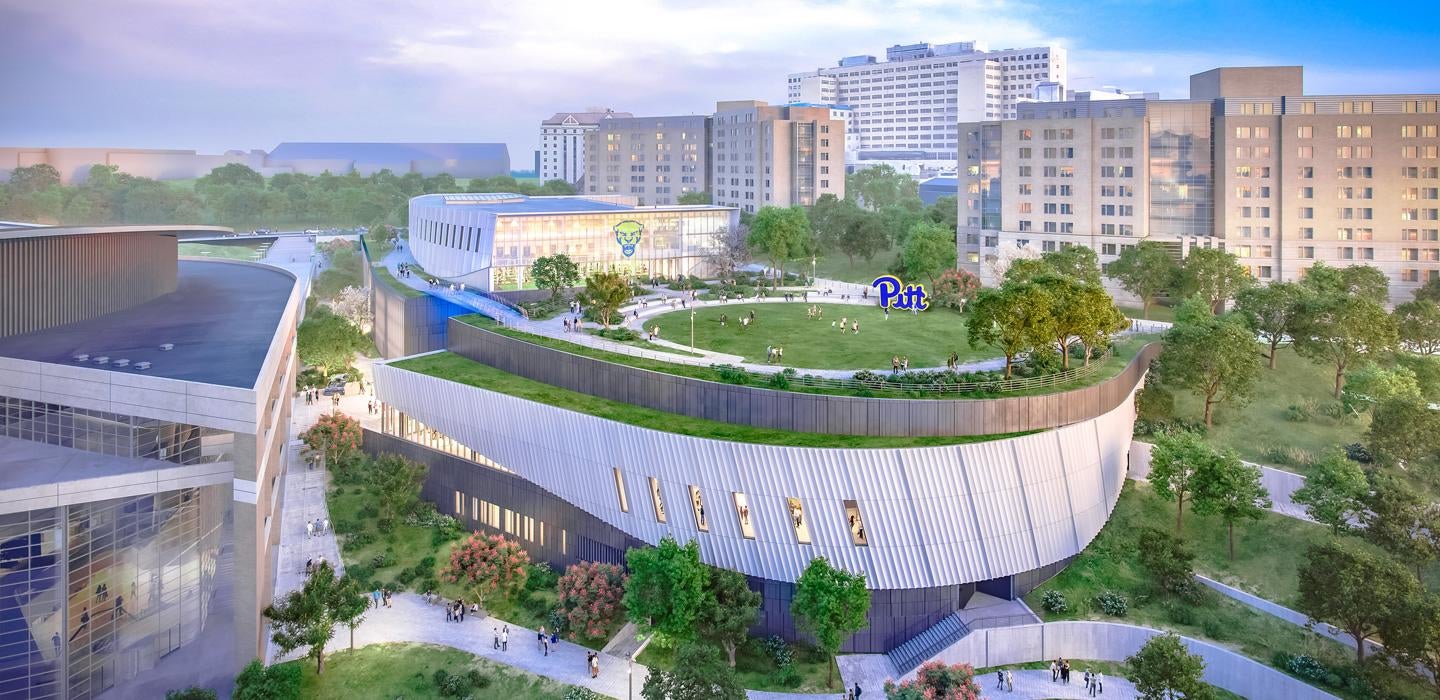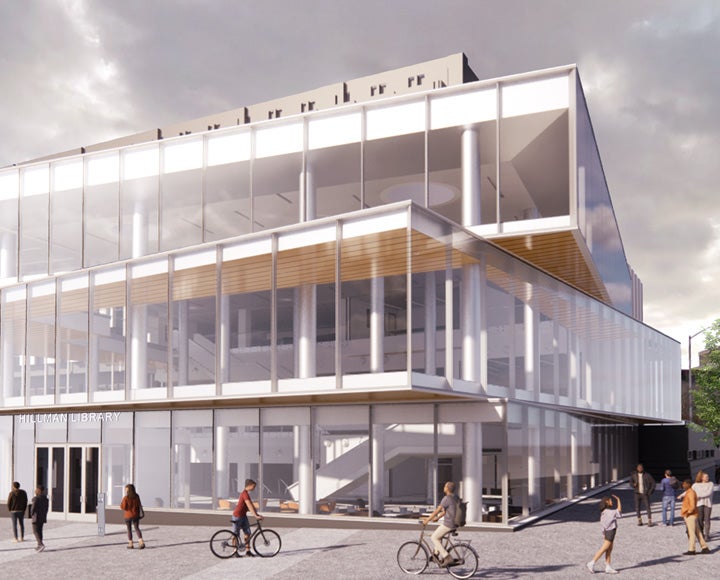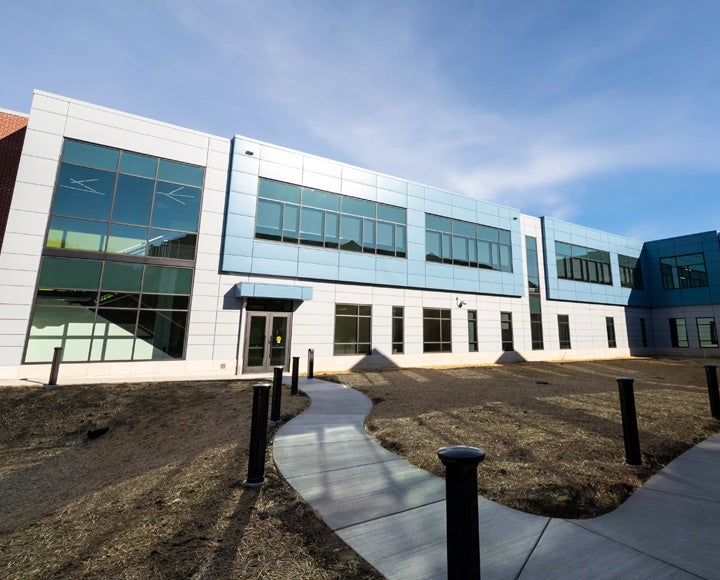
Subscribe to Pittwire Today
Get the most interesting and important stories from the University of Pittsburgh.On your way to Alan Magee Scaife Hall for a cup of joe at the new cafe, you might have noticed towering cranes on O’Hara Street at the site of the former Learning Research and Development Center. What these campus changes and other developments have in common is a document: They’re driven by the Campus Master Plan.
Released in 2019 after a two-year comment period during which students, faculty, staff and community members gave feedback to shape the vision, the 70-page Campus Master Plan gives an overview of the infrastructure goals the University hopes to achieve in the next 20-30 years.
The plan is a big picture look that sets individual building projects in context, said David DeJong, senior vice chancellor for business and operations. In other words, it’s not just a list of construction jobs.
“It’s a critical guide essential to the work we’re doing, and it ensures that our decisions are appropriately prioritized, that our work is having the right impact at the right time,” he said.
DeJong described the Campus Master Plan as a living document — flexible and amendable to meet the shifting needs of the campus community and responsive to an evolving economic reality.
To illustrate how it maps the future of the University, DeJong offered a tour of the latest construction, building openings and renovations on the Pittsburgh and regional campuses and what we can look forward to in the next five years. Take a look.
On the horizon
The Eatery, slated for fall 2024 completion
The renovation of The Eatery, Pitt’s largest dining facility, kicks off this spring. The University is adopting a phased construction approach, transforming the space section by section with the first iteration scheduled for completion by the 2023-24 academic year.
The concept is a modern take on the dining hall. New and returning students will be met with a fast-casual concept with made-to-order menu items and seating configured to promote social opportunities.
“Even though The Eatery is in this transitional period, we’re taking good care to make sure we still have great options for students on campus this summer,” said DeJong. Though plans aren’t yet solidified, the campus community can anticipate an increase in outdoor dining options as well.
Hillman Library, scheduled completion, fall 2024
You may have already taken in the sleek, ultramodern upgrade to the library’s first and second floors. This summer, the library is undergoing renovations to the ground floor and the core of the building, which includes elevators and bathrooms.
The Hillman Library's new look and feel is contemporary with open, light-filled spaces, inviting study spots, moveable modular furniture and an expanded Open Lab — a technology and experiential learning hub hosting workshops, class sessions and trainings. And essential to any study session: a revamped cafe with an extensive menu to feed snack and caffeine cravings.
The ground floor renovation, when complete, will sport a new light-filled atrium entrance, a Media Lab "blackbox" light and sound-controlled audio and video production suite of spaces, a centrally located help and information desk, a ULS/Pitt IT computer lab, a data lab and more.
“We undertook the Hillman Library renovation with student impact front of mind. Our plans for Hillman are the plans of continuous improvement,” DeJong said.
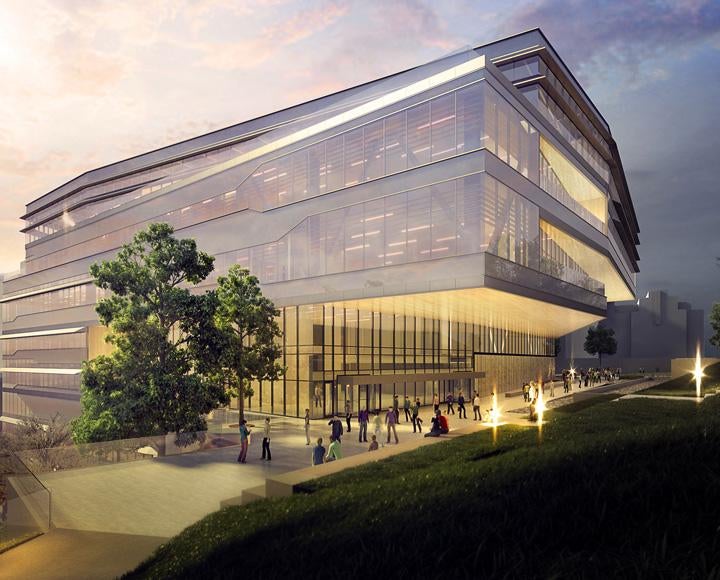
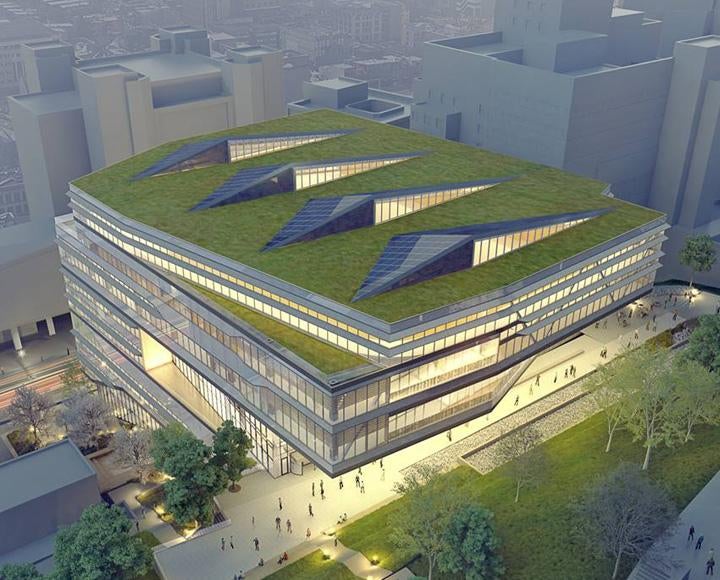
Campus Recreation and Wellness Center, coming fall 2024
DeJong called the 270,000-square-foot complex “a massive game changer” where the campus community will access care for both their physical and mental well-being. Under construction on O’Hara Street, the center will serve as a destination linking the upper and lower campus.
The center, designed with a holistic framework, will feature a meditation and yoga space, a pool, weight-lifting equipment, a jogging track, volleyball and basketball courts and a dining space.
Feeling nebby? You can view a live cam of the building’s construction.
Hillside beautification, coming fall 2024
The hillside surrounding and above the Campus Recreation and Wellness Center is being transformed from throughfare to a landing place. DeJong said the vision is to adapt the green space into somewhere students can gather, study and take in views of campus. Hidden below the surface of the proposed outdoor patio area is a stormwater system to capture runoff and channel rain water to Pitt’s chilled water plant, which will help Pitt meet its sustainability goals.
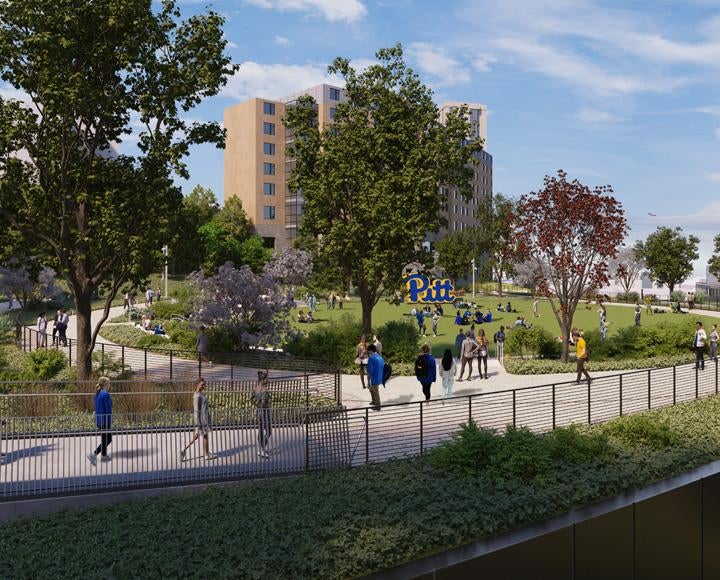
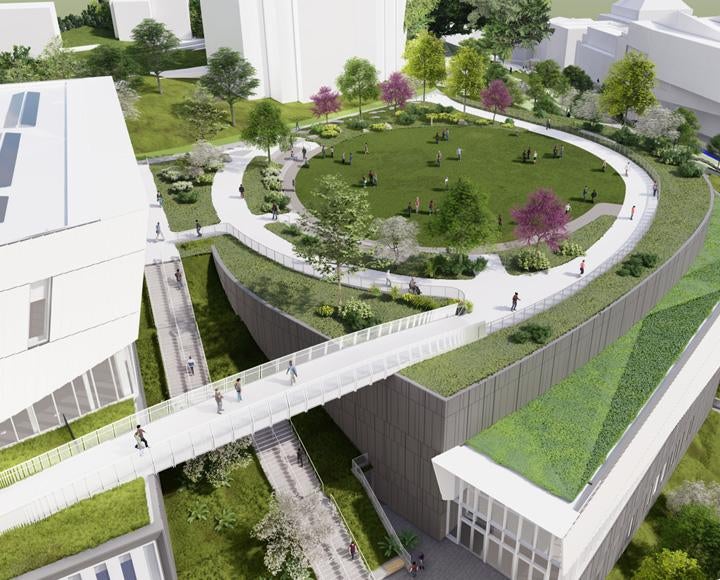
Victory Heights Arena and Sports Performance Center, spring 2025
Pitt’s volleyball, wrestling and gymnastics teams will one day compete in world-class facilities — the kind of place worthy of athletes who bring home ACC championships and ACC Co-Wrestler of the Year recognition. The Victory Heights 3,000-seat arena and sports performance center, soon to be constructed adjacent to the Petersen Events Center, will also serve the strength and conditioning, sports medicine, nutrition and mental well-being needs of student athletes in 16 Pitt athletics programs.
One project in the Victory Heights’ initiative is already finished — renovations and a third-floor addition to the Petersen Sports Complex wrapped up in 2021 — and a celebration to mark the next phase of the arena’s construction occurred in April.
Always reinventing
Another way Pitt improves campus and reduces its construction impact is by upgrading existing facilities. As detailed in the Pitt Sustainability Plan, Pitt is committed to reducing its environmental impact in every aspect of its operations, including construction and renovations. That commitment is reflected in Pitt’s 17 building projects with LEED green building certifications.
“Sustainability is one of Pitt’s core values; it's embedded in everything we do,” said DeJong.
Here are some of the recent projects completed with sustainability in mind.
Salk Hall, completed summer 2022
Home to the Schools of Pharmacy and Dental Medicine, Salk Hall underwent an extensive renovation, including installing state-of-the-art classrooms and research laboratories, a three-story atrium designated as a collaboration space and student lounge, and a revamped lecture hall.
The building’s upgrade earned Pitt its first LEED Platinum certification — the highest honor of its kind for sustainable building. Most notably, more than 90% of construction and demolition waste was diverted from landfills, and the project used renewable energy from the University’s power purchase agreement.
[Here’s how the renovation of Salk Hall forged a new path in campus sustainability.]
Alan Magee Scaife Hall, phase 1 completed May 2023
The West Wing addition of Alan Magee Scaife Hall was completed on April 21. Primarily for School of Medicine students and welcoming all Health Sciences students, this 104,800 square-foot, seven-story building houses a 600-seat, state-of-the-art lecture auditorium, several team-based learning classrooms, small and large group rooms, individual study rooms, a simulation center, and a new anatomy lab. Along with several student lounges and gathering areas, the building includes a Panera Bread on the fourth floor slated to open later this month. The building’s addition and renovation — which include a new cascading stormwater management feature planted with native species along Lothrop Street and was built to support future rooftop solar panels — are pursuing LEED green building certification.
What’s new on Pitt’s regional campuses
While focus of the Campus Master Plan is on the University’s Pittsburgh campus, there’s a lot happening on the regional campuses as well, including major boosts to STEM resources on Pitt-Greensburg and Pitt-Bradford campuses.
“Those subjects are fundamental to workforce needs,” said DeJong, “and they bolster those regionals’ competitiveness in attracting and retaining students.”
Pitt-Greensburg Life Sciences Building, completed winter 2023
The new Life Sciences Building boasts seven laboratory spaces available to science, nursing and general studies students, which provide resources for anatomy, physiology, biology, microbiology, organic chemistry and chemistry prep, conference and student collaboration rooms.
Pitt-Bradford George B. Duke Engineering and Information Technologies Building, completed winter 2023
Pitt-Bradford students have a new 39,000-square-foot facility for hands-on learning opportunities. The George B. Duke Engineering and Information Technologies Building is the campus hub for engineering, computing and energy studies. Students’ classroom curriculum is bolstered by the complex’s rooftop solar panel array, virtual reality lab, networking lab, makerspace, ample fabrication space and engineering shops.
— Nichole Faina


